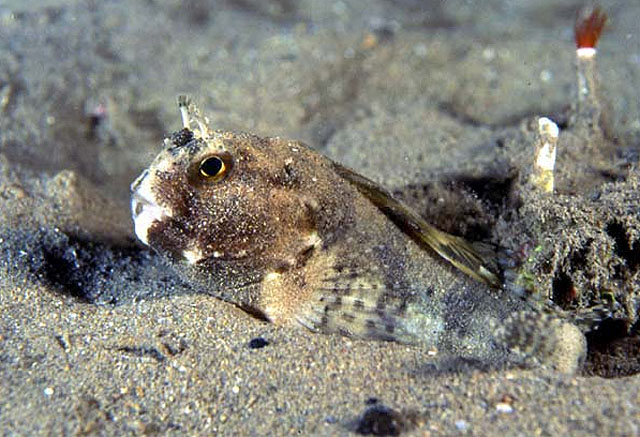| Blenniidae (Combtooth blennies), subfamily: Blenniinae |
| 20 cm TL (male/unsexed) |
|
demersal; marine; depth range 10 - 400 m |
| Southeast Atlantic: Atlantic coast from Morocco to the English Channel. Also known from the Mediterranean and Black Sea. |
|
Dorsal spines (total): 11-12; Dorsal soft rays (total): 14-16; Anal spines: 2-2; Anal soft rays: 15-16. Gill membranes not forming a fold across isthmus. Tentacles on nasal opening, above eye and on nape near first dorsal fin ray. Dentaries joined by suture. Lateral line reduced, discontinuous. Anterior part of dorsal fin conspicuously higher than posterior part. |
| Adults are found over hard bottoms. Mainly nocturnal, they feed on small invertebrates. Oviparous. Eggs are demersal and adhesive (Ref. 205), and are attached to the substrate via a filamentous, adhesive pad or pedestal (Ref. 94114). Eggs are laid under mussel-shells or stones and guarded by the male (Ref. 5981). Larvae are planktonic, often found in shallow, coastal waters (Ref. 94114). Spawn in April (Marseille) or July (England) (Ref. 5981). |
|
Least Concern (LC); Date assessed: 13 November 2007 Ref. (130435)
|
| harmless |
Source and more info: www.fishbase.org. For personal, classroom, and other internal use only. Not for publication.
